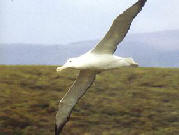|
The Department of Conservation application seeks to establish a 484,000 hectare (1,869 square mile) marine reserve encompassing the territorial sea and all internal waters surrounding the Auckland Islands out to the 12 mile territorial boundary. It will become New Zealand's second largest marine reserve, safeguarding the main breeding ground for the threatened Hooker's sea lion, southern right whale, and yellow-eyed penguin.
Birdwatchers who visit these remote islands will see black, grey-faced and Cook's petrels, Buller's shearwaters, blue penguins, Australasian gannets, and Arctic skua. Whalewatchers will find Bryde's whales, common and bottlenose dolphins and orcas.
The country's primary conservation organization, the Royal Forest and Bird Protection Society, known Forest and Bird, welcomed the government's approval of the marine reserve application. The protected area includes all the waters now in the Auckland Islands' Marine Mammal Sanctuary, and overlaps with other protected designations, the group observed.
"The approval of this marine reserve also protects the part of the New Zealand Subantarctic World Heritage Area that surrounds the Auckland Islands," said Barry Weeber, Forest and Bird's senior conservation officer.
The application by Director-General of Conservation Hugh Logan says a Auckland Islands Marine Reserve aims to begin the establishment of a marine reserve network that would represent the full range of habitats and ecosystems found in New Zealand's marine environment when fully developed.
"In a region where all living things are dependent on the sea,
this would allow for a holistic approach to conservation
management integrating both the terrestrial and marine
environments. The establishment of this marine reserve is in
the national interest and is of international scientific significance,"
the department's application says.
Sea lion pup on the Auckland Islands tagged by the
New Zealand Department of Conservation
|


